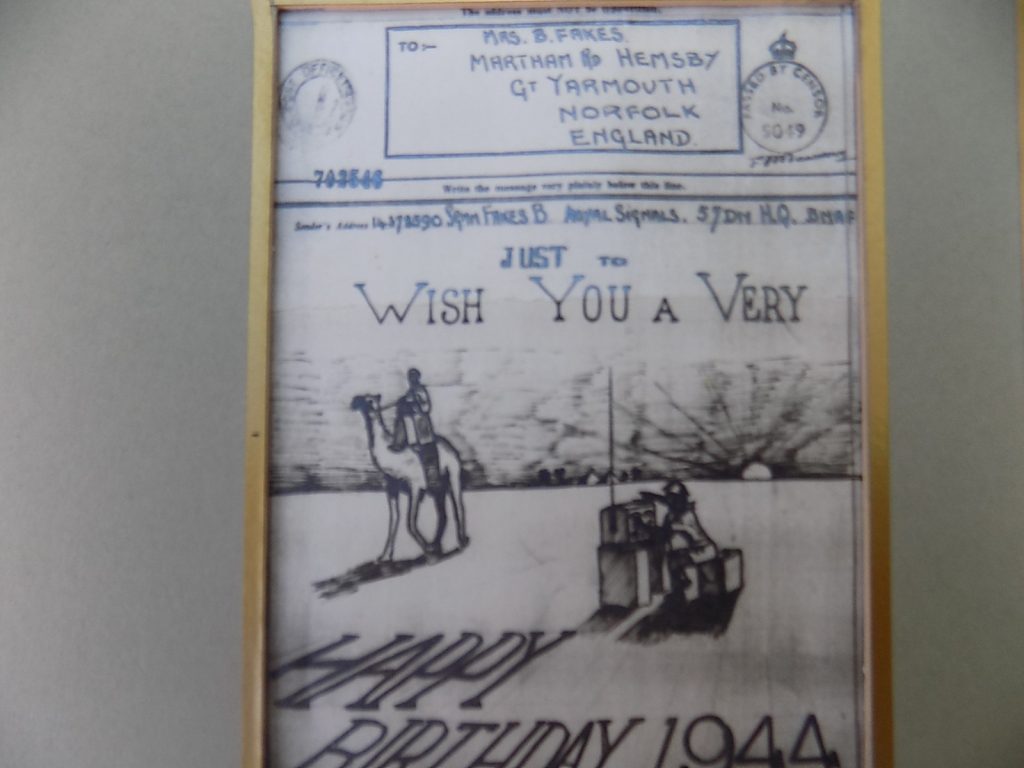An Airgraph from world war 2
I highlighted in a previous post some of the art work I believed Grandad had produced during his world war two service time. I initially thought that these were just ordinary letters? They turned out to be something more interesting . They turned out to be airgraph examples .

The true identity:
The true identity of these documents didn’t require too much detective work . I needed only to read the messages enclosed to find the answer . Grandad had mentioned the word ‘ airgraph’ directly in one example . I’d never heard this term before, so needed an explanation ? I found the answer on Google. .
A quick explanation:
The British authorities introduced the airgraph system during the first half of 1941 to counter the problem of mass mail from allied service personnel serving in North Africa fighting the Axis forces . Sent by boat normal mail incurred long delays due to the long shipping routes . Mail could be sent by air , but the sheer bulk and limited transport available proved problematic. Kodak provided a solution.
Before the war Kodak had already developed a microfilm system . In 1941 the company had an office in Cairo with the equipment to start up a service for the British . The process ran as follows. The sending end created a micro reel copy by photographing each document in turn. Development of the reel occurred at the receiving end in England after transport by air. The recipient received the final product by normal post in a little brown envelope .
The original document came in the form of a standard blank form which was about A4 size , always with an area to write the address and senders details . Instructions for completing the form were on the reverse side . The final posted and delivered product was a 1/4 the original size . Grandads examples are classed as illustrated . Massed produced illustrated base documents were produced at higher unit level and handed out to servicemen to add their own message and details . These could be such examples ? However for the time being I’m sticking with the belief that Grandads work is his own , as the style on each one is similar and somewhat unique to the whole collection . It is also a style I can remember from my childhood when he would often sketch little pictures at my request.
For a more detailed description of this topic and some great examples follow this link . Somewhere in the region of 330 million of these airgraphs were sent up to the end of the service in 1945. I’m lucky enough to have in my possession a few cherished examples .

